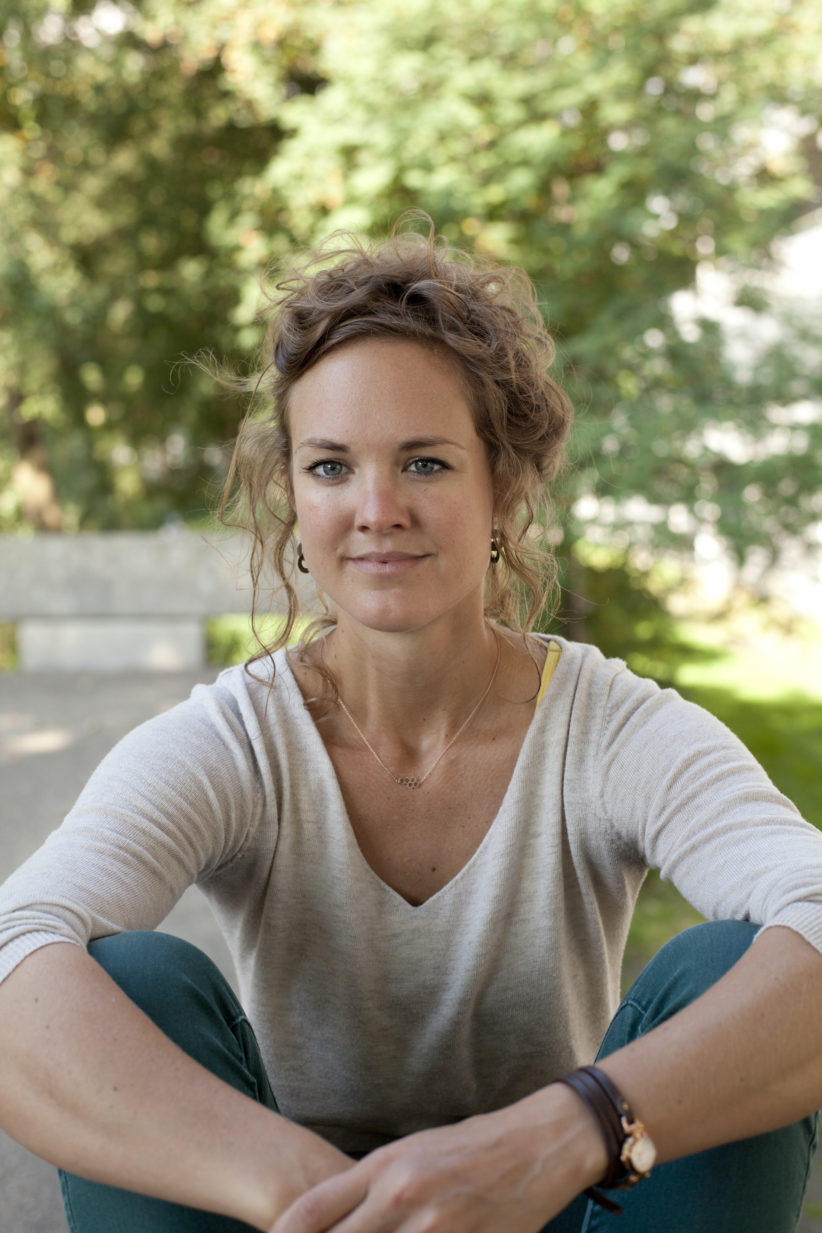Make social innovation intentionally unsexy and more political
Recently author Adam Greenfield wrote a critical blogpost about social innovation: “Commoning systems, part II: On the a-historicity of “social innovation.” Such writing is rare in the field of social innovation, a field that is mostly written about in uncritical and applauding ways. What are Greenfield’s points of criticism and ideas? What do his critiques mean for the social innovation field at large, and Kennisland’s social innovation work specifically? Despite the fact that some of Greenfield’s points could be considered old-fashioned, the social innovation field can certainly sharpen its mission and practice. Conclusion of Kennisland: make social innovation intentionally less sexy and more political, and build a better body of knowledge and (self-)critique.
Interpreting social innovation
Greenfield notes that social innovation is a growing and competitive field: there’s a plethora of conferences, challenges, awards, books and “chirpy, boosterish” blogs to sooth the social innovators’ needs. Greenfield defines social innovation as a response to the failure of the market and the state to compensate excesses caused by neoliberalism adequately, described as a “shortfall of social provision”. The consequences are unfavourable: millions of people are poor, depressed and desperate, which is consequently potentially harmful for societies at large. Greenfield defines social innovation as local, bottom-up, grassroots, voluntary (non-commercial or government) initiatives rooted in society and aimed at improving and/or providing public services.
‘That’s when I reach for my revolver’: Greenfield’s critique
GreenfieldSocial innovation is a growing and competitive field. heats up on four criticisms he sees in the field of social innovation. First, he believes that the kind of innovations the field produces, and the context in which those innovations develop, are depoliticised and apolitical. They are stripped of the idea that at their core they are, or should be, political interventions. Secondly, Greenfield finds social innovations individual, unsystematic and disconnected, which causes an underappreciation of the strength of large-scale collective action. Thirdly, the author sees that social innovations of such an individual, unconnected character can easily fall prey to major market players as it is financially attractive for start-ups to co-opt. Consequently they will get eaten in the existing (neo-liberal) market system that they often initially fought against.
But Greenfield seems to mainly wind up (“that’s when I reach for my revolver”) about his fourth point: that the whole philosophy underlying social innovation is ahistorical.Social innovations are individual, unsystematic and disconnected. Why? First, Greenfield states that most social innovations are not new but should be interpreted as an ordinary, elongated survival response of communities to social, economic and institutional pressures in their own environment. Landless farmers, feminists, the LGBT-community, slaves, veterans and poor migrants eventually all formed movements and (sometimes private) institutions to improve their social position. But, writes Greenfield, “[social innovation] ideas for collective living are currently severed from its politically radical roots.” His second point about the ahistorical nature of social innovation is a critical expression to how the media reports on these new initiatives: none of those media outlets examine what exactly the long-term effects of the initiatives are of which they write about in such applauding ways. Their basic mission seems mainly aimed at promoting the field and not on the development of a good portion of constructive criticism.
Greenfield’s ideas for improvement
Greenfield also acknowledges the fields forte, namely that it shows that there is a tremendous amount of talent, energy and potential present in society. He thinks that the success to challenge the “dark times” lies in our ability to collectively tap into this immense resource. Greenfield wishes for more and better “collective tools” (he does not point to any in specific) that work for the people who they should serve (the poor, the depressed, the despaired) and make them more publicly available.
What can the social innovation field do to properly support this development? GreenfieldThere is a tremendous amount of talent, energy and potential present in society. remains quite abstract throughout his article, but especially when he suggests his four ideas. First, he believes that social innovation should be better recognised as a left-leaning political activity, as “anarcho-socialism, anarcho-syndicalism and as autonomism”. Second, this field has to design infrastructures that are able to connect and safeguard socially innovative, small and vulnerable initiatives of individuals and local communities and make them bigger and stronger. Thirdly, he finds that the field needs to improve its (theoretical) knowledge about how “collective action” works over the long term as throughout the late 19th and early 20th centuries ordinary working people drew titanic strength from this body of thought. Finally, the field needs to increase, deepen and improve its knowledge about social innovation with more critical thinking. Greenfield thinks both social innovators themselves and the media outlets who write about social innovators can contribute here. He asks specifically for better (long-term) assessments and documentation of initiatives and better (historical) contextualisation of social innovation.
Interpreting and deepening Greenfield’s ideas
What can the social innovation field learn from Greenfield’s critiques and ideas? His concept of social innovation is what professor, politician and philosopher++Innovation paradigmAcademics Karl-Erik Sveiby and Benoît Godin also problematise and challenge the concept of innovation in their writings on the (neoliberal) innovation paradigm. Professor David Lane also belongs to this growing group of scholars who critically engage in the debate against an ‘innovation society’. Roberto Mangabeira Unger in ‘The Task of the Innovation Movement’ would call a ‘minimalistic approach’ of social innovation as a field that mainly interferes with civil society, but has no ambition to interfere with politics, cultural values or the state. At Kennisland we recognise the image of social innovation as a competitive field of technocratic, individual and competing ‘solutions’ to societal challenges (i.e. apps, toolboxes, web-based platforms, start-ups). In our view a minimalistic approach and solutions talk do not only often fail to create new or improved public value, but also do not automatically (re)distribute its produced value in equal manners. The problem with the ultimate belief in solutions in the field of social innovation might even be more systemic than Greenfield’s blog post makes us believe. In our experience new solutions++SolutionsAs written in Kennisland’s mission statement on social innovation. often fail to develop further than the level of small-scale experiments as they encounter resistance within institutions and organisations. Laws, organisational processes and cultural values do not innovate at the same pace. New solutions often fail to deliver value to a broad range of citizens. New solutions do not necessarily turn the focus of discussion towards underlying opinions, values or ingrained patterns of behaviour, while these are often at the core of inequalities. In short, new solutions do not automatically bridge the gap between failing systems and the daily lives and experiences of those who badly need better services.
Maximalist and unsexy
At Kennisland we therefore strive to a more ‘maximalist approach’ that Greenfield seems to aspire to as well. We like to see social innovation as an ambitious social movement that is seeking alternatives to neoliberal ways of living. “Social innovation stands for processes that create economic and social value in new, unconventional partnerships.” In Kennisland’s 30 projects and 6 work fields we pay special attention to “how to intercept and prevent anti-social innovation (unintended or negative effects of innovations). And how to build infrastructures that share and expand newly created value.” Kennisland wants to bridge gaps between how systems (institutions, laws, rules, procedures) act and how citizens and communities actually thrive.
In practice this means our social innovation work focusses on the relational, cultural, social and thus more unsexy aspects of innovation processes. We design approaches that innovate contexts (institutions, cultures, rules, policies) in which innovation takes place. For example we establish ‘story departments’ in the ‘statistics departments’ of municipalities to innovate research attitudes in social policymaking practices, we lobby for better copyright laws in Brussels, we realise national funds for teachers to innovate in their schools and we start conversations on how cultures of fear and misperceptions of the ‘ill-behaved, anti-social citizen’ is a driving factor behind complex policy designs. We encourage others in the field of social innovation to do the same and connect them in their struggles, while we know these unsexy practices are tough to sell to funders who rather see tangible, fancy ‘social’ products. We set up new partnerships++Social labsThe publication Lab Matters calls ten work principles that we keep in mind when developing social labs: design and scale processes instead of solutions, spread ethics and ideas instead of solutions, connect with like-minded movements, become more politically aware, become better networked especially geographically, become financially independent, become more responsive to human behaviour, build innovation capacity within local communities, develop own evaluation methodologies to support practices, prototype new organisational models., such as social labs in which service providers, policymakers and citizens all play an equal role in the design and implementation of an innovation process to improve public services for, say, lonely elderly people or unfortunate youth. In these partnerships we develop new strategies for change (such as Feed Forward Stories), evaluation methods (such as dynamic evaluation), support infrastructure (such as challenges and incubators), organisational models (such as Voor je Buurt or Our New School) and international learning networks (such as Lab2) in which critical theory, knowledge and ideas about social innovation are strengthened.
More intentional politics in social innovation
So far so good. But how does Greenfield’s thought-provoking blog post challenge Kennisland’s own organisational practices in social innovation? Do our projects survive his specific four-tiered critique? Supported by his writing we initiated an internal discussion and asked ourselves: can we improve our contributions to the development of a (critical) thinking on social innovation? (Answer: always!). Can we can better immerse in (theoretical) knowledge, social movements and collective action? (Answer: If he means abstract, academic, intellectual knowledge then maybe that’s a bit old-fashioned. Our general level of belief in the value of academic knowledge for social innovation seems to be quite low). And, if the social innovation scene is so heavily critiqued, is there an alternative social movement or knowledge circuit we would rather rather identify with? (Answer: we don’t see it developing yet..) Answers to these questions will hopefully never become static, these are the questions any organisation should continue to ask themselves. At the same time there is a general need to stay pragmatic and to not get too hindered or delayed by intellectually resolving the various academic grand theories on social innovation, social movements and collective action before we can actually do anything on the ground, for the people we mean to help.
The one point that did trigger us was Greenfield’s point on politics. Should we not admit a little more political color in our work, or does that just hamper our fights for modern copyright laws or more inclusive education policies? In any case politics with a small ‘p’, influencing interests and power structures, and making informed and sustainable choices is inherent in our work. Every day we navigate between the interests of citizens and organisations, and we tinker with institutions, laws and regulations. A system is in fact not much more than a reflection of the current status quo of power relations in society. But it is that whole political story with a big “P”, a struggle between ideologies, that we find difficult. Our interventions are not often connected to programs of specific Political parties, because we prefer not to get bogged down in ideological trenches where people dig into an affirmative or negative attitude. By being a-Political, we can sometimes actually reach our desired social impact faster.
However, what we do think is that we can be more pronounced about where we stand per occasion, what we worry about, what we are concerned about. In any case we must be very careful to not reproduce systems indiscriminately. “We all know that the participatory society is of course just a neoliberal sauce on a hefty government cut,” is something a colleague said in our internal discussion with regard to the situation in the Netherlands, but it is not something we put up on our website. What we do show is how people are hurt by the current budgets cuts, and how we could support them in better ways. A social lab should not be an uncritical implementation of the government’s decentralising measures or a handy tool for organisations to pursue and advance ‘the participatory society’. Instead, it needs to challenge this development as a political choice. Our project Our New School in which citizens of Amsterdam could design their own school should not make existing segregation even bigger. If it does, we should acknowledge it. And what can we do to make our workhub Spring House and our own organisation more culturally diverse (and thus less white, elitist)? These questions require a clear political agenda to make policies and guidelines accordingly.
Finally, we think that politics still mainly occur in society itself, between humans who in the execution of socio-democratic projects or policies show behaviour that does not fit the description of a kind, post-it sticking social creature. As Dutch columnist Rosanne Hertzberger once put it bluntly: “Humans. Those filthy, snorting, aggressive, horny, confused, irrational herd animals, who pray to God and want to out-argue others, always”. In that sense, our job is also to keep (social democratic) systems true to their own pretensions. In the future we intend to be even more pronounced if we identify social inequality or abuse in our own fields or organisations. We would take a more public stand and follow suit with an outspoken narrative. We are then happy to leave it to the discretion of Greenfield, critical academics, media and political parties to swipe left or right, to say yay or nay, and help us determine whether social innovations are individual, disconnected, unsystematic, competitive, a-historical or a-political.





